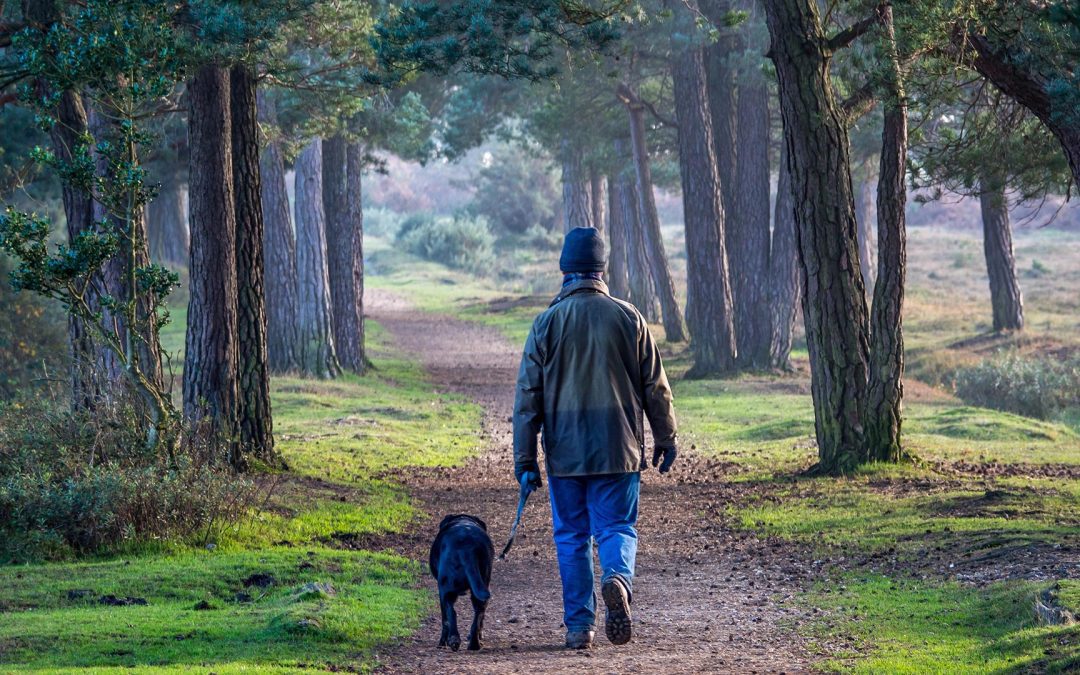Our dogs need to be walked, so it’s our job to make sure this happens for them every day. That seems straightforward enough, doesn’t it? Just choose where you want to go walking, and off you go!
But, there is some basic etiquette you need to consider when walking your dog, some of which, a lot of people are unaware of. We will look at this now.
Dog walks can look and feel differently for each human and dog team. To help you visualise this, here is the same situation explained from two different viewpoints:
Friendly Dog Viewpoint:
You have a friendly dog, who makes new friends everywhere they go. They tend to get on with everyone they meet, and you can be sure that they will likely want to play with any new dog they come across on their walks. You know they have a good recall, so you let them off regularly when it’s safe for them to have some more freedom. And, because you know they are friendly, you don’t always call them back to you when you see another dog approaching.
Nervous/Reactive Dog Viewpoint:
You have a nervous and/or reactive dog who feels quite stressed in the outside world. You are working hard to help them to feel more comfortable and build their confidence in new environments. They generally have a good recall, but they can panic when they meet another dog. So, you keep them on a long line when you’re walking in an area where other dogs might be. When you see another dog nearby, you call them back to you and keep them on a shorter lead.
If you let your notoriously friendly dog approach the dog who is nervous and stressed, that’s not going to benefit anybody involved. It’s actually considered quite rude and inconsiderate to do so, and it’s a myth that your dog must greet every single dog they meet!
In fact, many dogs are selectively social creatures, who simply don’t want to socialise with every single dog they meet. Some dogs will have lots of doggy friends, who they like to run around and play with, and some dogs would prefer not to do this at all, and both are fine! This is very much dependent on the individual dog, their breed, their temperament, their preferences, their past experiences and more. This may also change as your dog grows and matures, with many dogs becoming more socially selective as they age.
Instead, it’s considered good manners to put your dog back on a lead when you see another dog approaching. The same goes for cyclists, joggers, walkers, horse riders, or any other pedestrians you may encounter on your walks. This is especially important if the other dog you are approaching is already on their lead.
There are lots of reasons why dogs need to be kept on their lead, and even more reasons why they wouldn’t appreciate being approached by another dog that they don’t know.
Dogs can be on lead because they are elderly, or recovering from an injury or illness, and won’t appreciate being bounded up to by a more exuberant dog. They may be training to improve their concentration on their owner around distractions, so it would be too much to ask for them to listen to their guardian’s cues when your dog is whizzing around them trying to play. The on-lead dog may have had negative encounters with other dogs previously, which has left them feeling defensive and anxious when strange dogs approach them suddenly, as they can’t move away from the incoming dog.
Even when both dogs are on lead, it’s quite an unnatural way for two unknown dogs to meet each other for the first time. Given the choice, most dogs would choose to greet each other ‘nose to tail’ whereby they both sniff each other’s bottoms, instead of meeting head-on. This is made more difficult for them to do when they are both on lead, and this can be particularly intimidating for nervous dogs, and frustrating for friendly dogs who are desperate to say hello.
So, with this in mind, here’s what you can do to make your dog walks more enjoyable for you, your dog, and anyone else you meet along the way:
- Always ask the owner’s permission before letting your dog say hello to their dog.
- Never let your dog run up to an unknown dog, no matter how friendly your dog may be!
- Keep a close eye on the body language of both dogs to check they are both comfortable throughout the greeting.
- If there are any signs of tense, stiff body language, raised hackles, or intense staring, separate the dogs.
- Where possible, don’t let dogs greet each other nose to nose, because this can feel confrontational.
- If your dog doesn’t have a reliable recall, make it a priority to work on improving this. Use a long line if you are not sure that your dog will come back when you call them.
- If you see another dog is nervous, or struggling with the presence of your dog, give them space! Cross over the road, or create some distance between them, to give both dogs a chance to pass by one another without any close interaction.
WHAT NEXT?
Visit the Positive Dog Training Academy website to view our current Puppy and Adolescent Dog Training Courses


